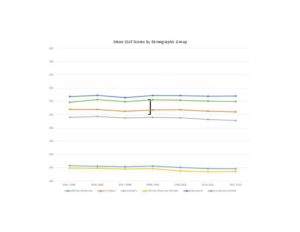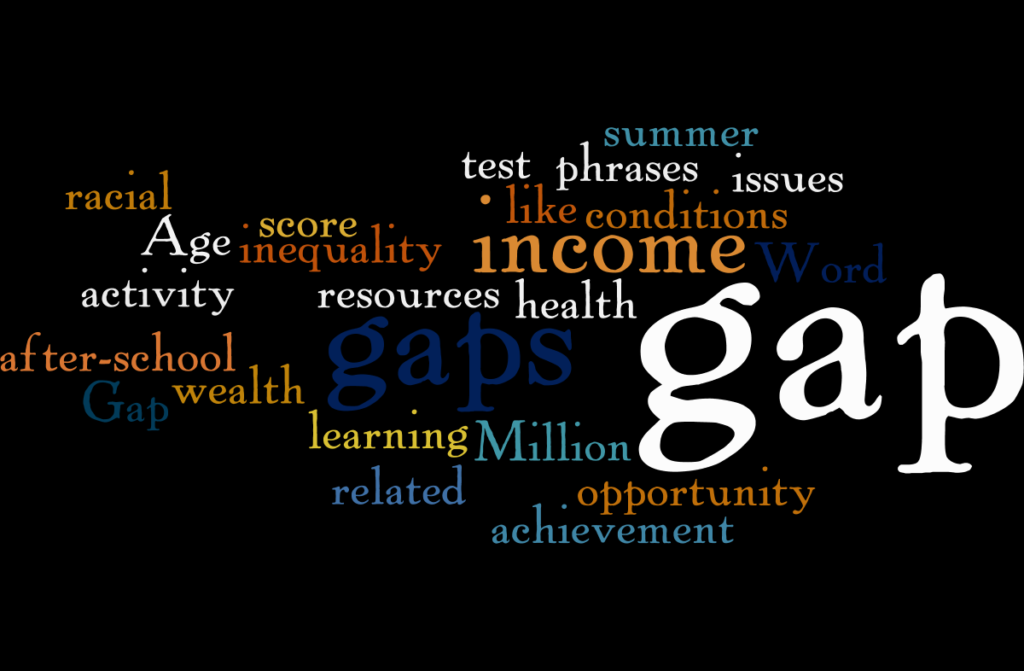SeeTheGaps is an interactive, multi-disciplinary resource and commentary platform for researchers, practitioners and donors focused on inequality gaps in basic living matters and education by class, socioeconomic status (SES), and race.
What does SeeTheGaps do?
We search for gaps in basic living matters and education and explore how to close them
Click on any of the orbiting topics or educational timeline components to learn more and see how they are all connected.
Living Matters
Health
The health of a child is important not only for future adult health issues, but can correlate with cognitive and developmental milestones. Early childhood health care is an instrumental input factor for a support structure approach to early childhood intervention programs that yield positive lifelong gains and measurable returns on investment.
Read MoreNeighborhood
Where people live has become a strong predictor of their academic success and socioeconomic status. Neighborhoods, housing and schools have also become highly geographically segregated by race and class.
Read MoreOccupation
One's occupation is often influenced by close family and friends as well as level of education.
Read MoreEarly Childhood
The first three years of child's life are significant for early cognitive and social development and can affect a person's academic and SES achievement.
Read MoreEducation Timeline
Wealth
Mauris lacinia eget sem sed vulputate. Praesent eget erat a massa malesuada suscipit in at nibh. Nunc congue pharetra nisi id accumsan.
Read MoreHealth
Mauris lacinia eget sem sed vulputate. Praesent eget erat a massa malesuada suscipit in at nibh. Nunc congue pharetra nisi id accumsan.
Read MorePrenatal
Mauris lacinia eget sem sed vulputate. Praesent eget erat a massa malesuada suscipit in at nibh. Nunc congue pharetra nisi id accumsan.
Read MoreNeighbourhood
Mauris lacinia eget sem sed vulputate. Praesent eget erat a massa malesuada suscipit in at nibh. Nunc congue pharetra nisi id accumsan.
Read MoreIncome
Mauris lacinia eget sem sed vulputate. Praesent eget erat a massa malesuada suscipit in at nibh. Nunc congue pharetra nisi id accumsan.
Read MoreOccupation
Mauris lacinia eget sem sed vulputate. Praesent eget erat a massa malesuada suscipit in at nibh. Nunc congue pharetra nisi id accumsan.
Read MoreScroll for more
We visualize gaps from across data sets and disciplines
We bring together expertise and resources in a categorized, easily understandable, searchable, and inter-connected way
We facilitate cross-disciplinary dialogue
Read Our Commentary Articles
What are the gaps?
Gaps are the seemingly insurmountable differences between poverty and privilege. They are measured treatments and outcomes between demographic groups on school disciplinary charges, standardized test scores, and rates of incarceration. Gaps can be seen in access to healthcare, the amount of financial reserves a family has saved, the number of books in a home, and words that a child hears by age three. Gaps are subtle, like the availability of public transportation and childcare for working parents, and they are obvious, like segregated housing and schools. Gaps are everywhere and primarily fall along racial and class lines.




